Coming up with freshwater fish ideas for stocking a 10-gallon tank wasn’t easy for me because there are too many good species to pick from. My personal struggles aside, I think that the list I made can immediately hook a beginner to the hobby (let me know?).

Although the possible species combinations for such aquariums are a bit limited you could still have a small community living in there.
Having said that, let me show you the 12 best fish that you can keep in your new 10-gallon tank.
12 Freshwater fish ideas for stocking your 10-gallon tank
When I first considered which fish I should put in my freshwater 10-gallon tank, I can admit that my enthusiasm outweighed my logic.
With so many options, I wanted to put all of my favorites together without considering if they would work well with one another. With further research, I discovered that you need to know which species can cohabitate with limited space, so hopefully, this list can help you avoid some of the mistakes I made.
Here are the 12 best freshwater fish for stocking your 10-gallon aquarium:
1. Asian Stone Catfish – Hara jerdoni

The Asian stone catfish, less commonly known as Hara jerdoni, is tiny at only 1.3 inches (3.3 cm) when fully grown.
They originate from the waters of India and Bangladesh.
The Asian Stone Catfish has a rock-like appearance with various shades of brown and black on their skin.
These unique little fish have darker colors that help them blend into their natural environment which makes it easier to hunt prey while avoiding predators.
However, despite their fun appearance, Asian Stone Catfish wouldn’t be very entertaining to watch in your 10-gallon tank due to their slow movement and docile behavior.
Also, keep in mind that they are not the best choice for a beginner because of how fragile they are, water parameters have to be just right for them to thrive, which isn’t the easiest aspect of tank care to perfect.
Authors note: Asian stone catfish like to have sand for burrowing and digging, so make sure to include some in the bottom of your tank to prevent them from becoming stressed.
2. Clown Killifish – Epiplatys annulatus
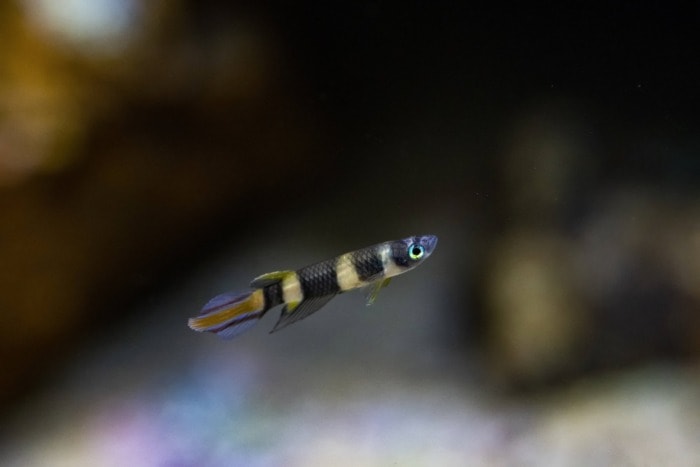
The Clown Killifish, less commonly known as Epiplatys annulatus, is a beautiful fish that is overall friendly. They are better suited to an aquarist with a bit more experience in keeping small fish.
Clown Killifish are fairly small at only 1.4 inches (3.6 cm) so you can keep about 8 pairs in a 10-gallon freshwater tank before running into problems.
They prefer to travel in schools to make up for what they lack in size, which helps them feel more comfortable swimming around bigger fish.
Not only are they peaceful to keep, they are also super colorful as well having thick bands of black and white on their body with one of the coolest tails I’ve seen in freshwater fish. In fact, the males have multi-colored tails that resemble fire from a rocket blasting off, which is such a unique feature to have.
3. Pea Puffer – Carinotetraodon travancoricus
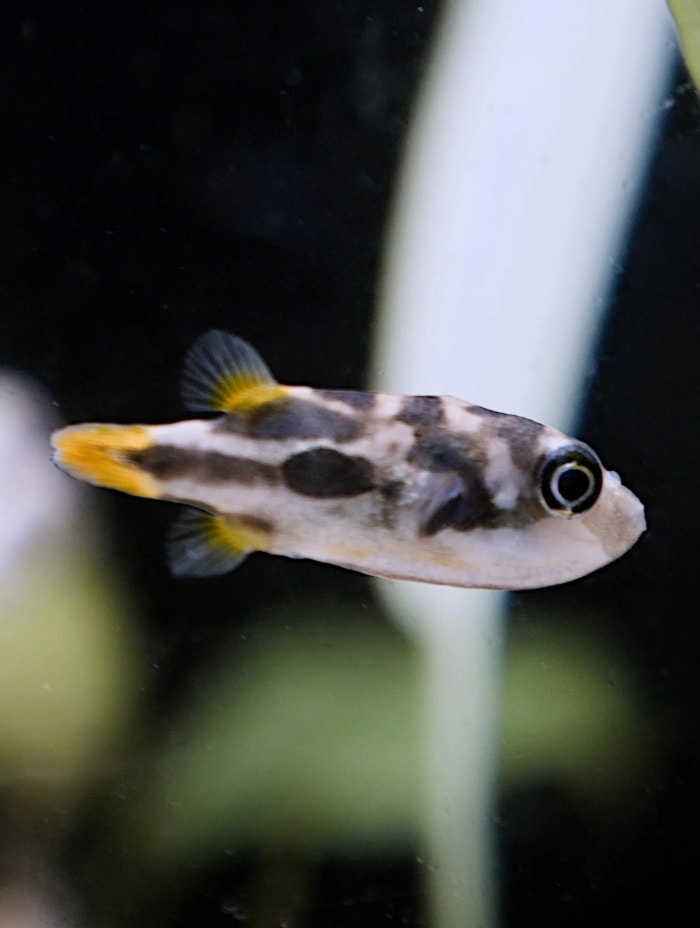
Despite their semi-aggressive and territorial nature, Pea Puffers are actually beginner-friendly.
They are a good option for anyone who’s read enough about them and wants to add one to their 10-gallon freshwater tank.
Most fish will tend to avoid you when you come around, but not this little puffer fish. The Pea puffer is only 1.5 inches (3.8 cm) in its maximum adult size, but it will inflate itself to be bigger if it feels threatened.
The appearance of the Pea puffer is one of my favorite things about it:
- they are yellow with dark spots on them;
- they hover around to get from place to place;
- they have a look on their face that appears as if they are trying to be intimidating.
Pea puffer fish (Carinotetraodon travancoricus) are considered small predatory fish, so try NOT to house them with others they will see as a snack. They will obliterate aquarium snails as they find them tasty but won’t be afraid to teach other fish a lesson about personal space.
In fact, their territorial nature is so strong that it is recommended to house a single fish per 10-gallon aquarium to avoid unnecessary altercations.
4. Pygmy Hatchetfish – Carnegiella myersi

The pygmy hatchet fish (Carnegiella myersi), is one of the smallest fish on this list at only 1 inch long (2.5 cm) when fully grown. They are petite fish with round-looking bellies that give them an interesting look.
Pygmy hatchet fish are typically gray, but they can come in a variety of shades depending on the species.
I offer you a word of advice though, these fish typically dwell at the surface of the tank and have a tendency to jump out to their death.
Keeping a lid on prevents this unfortunate event from occurring.
Anyway, these small fish are a little difficult to manage because of their food preferences and alarming jumpy behavior.
However, if you can handle all of these different aspects, the peaceful Pygmy Hatchetfish is a great option to stock your new 10-gallon aquarium with.
5. Kribensis Cichlid – Pelvicachromis pulcher
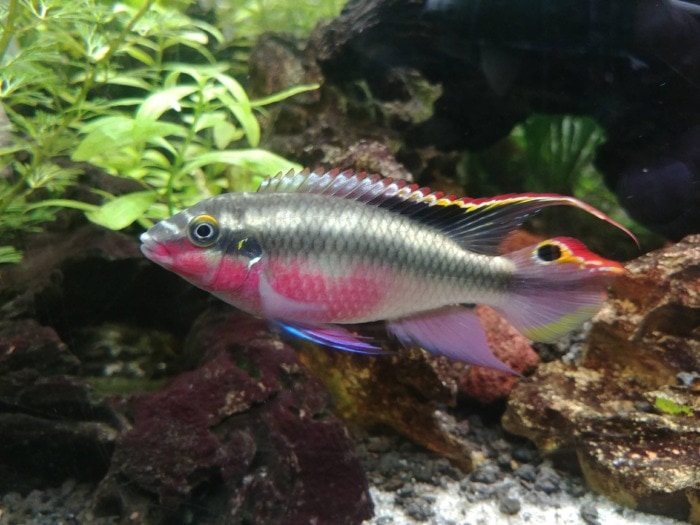
The Kribensis cichlids are stunningly colorful, exotic fish! They are native to the warmer waters in Southern Nigeria, and grow to be about 3 inches (7.6 cm) at their full size.
Their base color is a cool-toned gray, but they have various splashes of other bright colors that look like a rainbow on their skin. In terms of personality, these dwarf cichlids are peaceful for the most part, but can sometimes attack other tank residents that swim too slowly.
The Kribensis cichlid, otherwise known as Pelvicachromis pulcher, cannot live in a 10-gallon tank with other fish.
Any other fish you put inside with them will be nipped on.
Author’s note: Some people in the online fish forums will probably scold you if you suggest that a pair of Kribensis can live in a 10-gallon aquarium. “No, they need 20 or even 40-gallon tanks!”
While it is true that more space is better for any fish out there, people who actually keep Kribensis successfully do confirm that a 10-gallon tank can work pretty well for a single pair and nothing else.
6. Guppies – Poecilia reticulata
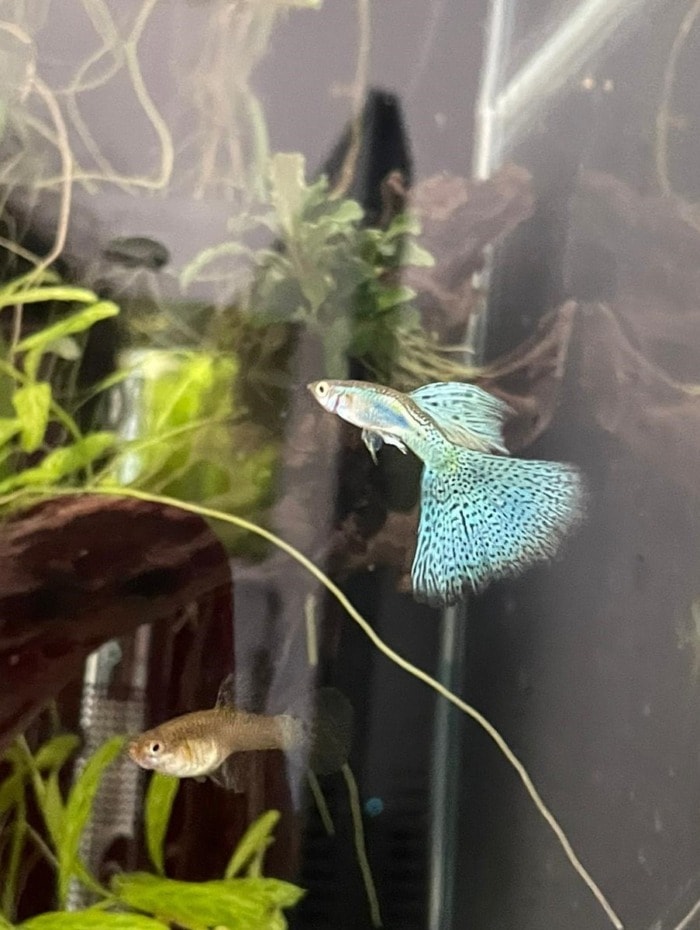
The Guppy is a South American native fish and is another great option when considering stocking ideas for a freshwater 10-gallon tank.
These pet fish are beginner friendly, social, and hardy, which makes them a wonderful choice for someone just getting started with an aquarium.
The male Guppies remain smaller at only 1.4 in (3.5 cm) in adulthood while the females grow larger at 2.4 in (6 cm). These low-maintenance fish come in a variety of different shades depending on the specific species of guppy, and the males typically have brighter, more noticeable colors to help them attract females.
Guppies from the genus Poecilia like to swim in schools to help them feel more comfortable.
These fish also don’t mind hard water, which is a convenient quality for an aquarist that uses the tap to fill their tank. To learn how to make an aquarium using tap water, click here.
7. Brevis Shell Dweller – Neolamprologus brevis
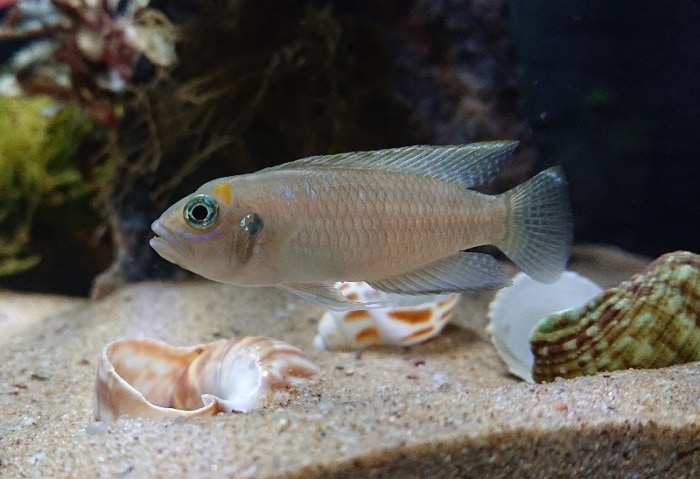
Brevis shell dwellers (Neolamprologus brevis) are fascinating fish whose lifestyle is way different than that of all the other fish on this list.
Their accurate name comes from the fact that these little guys like to live in snail shells found at the bottom of their habitat.
Author’s note: Brevis shell dwellers need sand in the tank so they have somewhere to bury their shells, so keep this in mind when setting up your aquarium.
Brevis Shell Dwellers have neutral colors with a few thin vertical stripes on their bodies, which isn’t the most striking appearance, but their feisty personality more than makes up for this.
As is the case with all of the fish on this list, they are small at 2.1 inches (5.3 cm) but bigger than most mentioned here.
They are mostly peaceful but will defend their home shells against anyone who gets too close, even you.
Keep in mind that there need to be more shells than fish in your 10-gallon tank to avoid fighting and competition.
8. Neon and Cardinal Tetras – Paracheirodon innesi and Paracheirodon axelrodi

When looking for tank residents that can elevate your 10-gallon aquarium to the next level with not only appearance but personality as well, the Neon and Cardinal tetras are great options.
These community fish are calm and won’t harass other tankmates.
However Neons and Cardinals tend to be a little timid when housed with bigger fish, so providing their surroundings with plants and decorations is best.
Both species are fairly small at 1.4 inches (3.5 cm) and 2 inches (5 cm) at their maximum size.
Like other small fish on this list, Neon and Cardinal tetras are schooling fish and prefer to stick together when swimming.
Author’s note: It might be difficult to tell Neon tetras (Paracheirodon innesi) and Cardinal tetras (Paracheirodon axelrodi) apart due to how similar their colors/markings are. Neon tetras are silver and blue with a red strip that goes from the center of their body to the tail. Cardinal tetras have the same colors but the red line on their body extends from their gills to their tails.
If you want to browse some more colorful schooling fish that are not limited to a 10-gallon tank you can visit this article.
9. Dwarf Snowball Pleco – Hypancistrus sp. L471
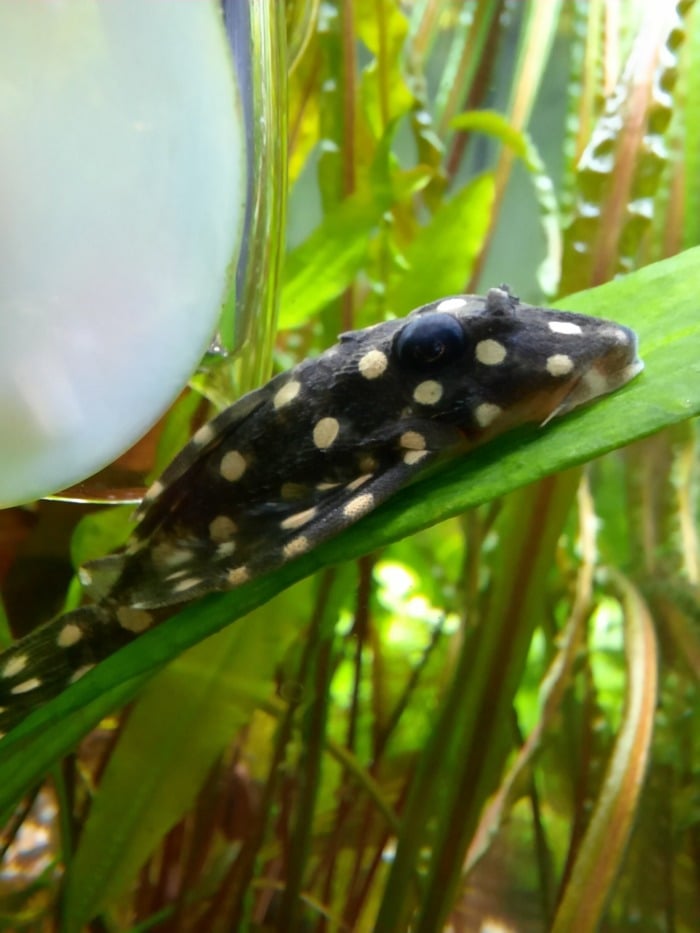
The Dwarf Snowball Pleco looks simplistic at first, but their dark skin with white circles makes them look like the perfect canvas for a starry night. This species, otherwise known as Hypancistrus sp. L471, is a type of cleaner fish that spends the majority of its time at the bottom of the tank searching for food and other things it can snack on.
Although Dwarf Snowball Plecos are considered peaceful community fish, their specific water preferences make them a less-than-ideal choice for beginners.
If you have the experience and equipment to handle them, they can easily live in your 10-gallon tank, because they remain tiny at 2.4 inches (6 cm) when fully grown.
I also have a whole list of unique small plecos like this one which you can skim if you want.
10. Betta – Betta splendens

The pretty Betta fish are some of the most popular options for all levels of aquarium owners.
They are fairly hardy, easy to care for, and visually appealing as well. Betta splendens come in many colors ranging from white, blue, red, orange, yellow, and more, and they have these delicate-looking fins that resemble tiny fans as they glide gracefully through the water.
Betta fish aren’t the smallest fish on this list, but they aren’t the largest either at only 2.7 to 3 inches (6.8 to 7.6 cm) when fully grown. Bettas are tropical fish and prefer warmer temperatures, so look for companions that can handle the same preferences as them when finding them housing buddies.
Author’s note: If you want to have multiple Betta fish in your 10-gallon tank then I recommend going for females. This kind of setup is called a “Betta sorority” and is the preferred choice because males are too aggressive to be kept together in such a space.
11. Celestial Pearl Danio – Danio margaritatus
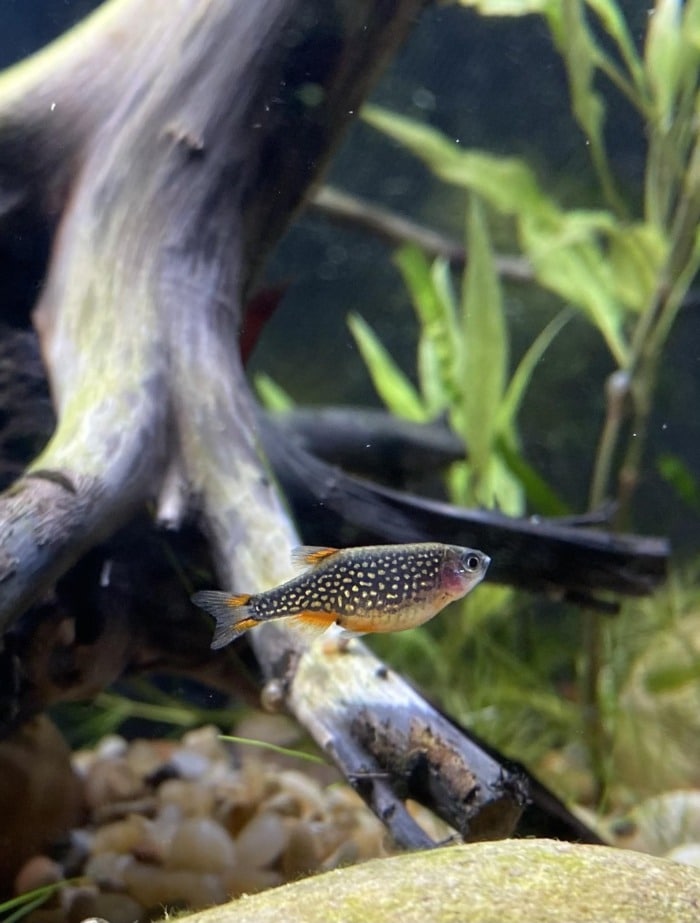
The Celestial Pearl Danio is a spotted fish with fiery fins. It is one of the smallest on this list at an adult size of only 1 inch (2.5 cm).
Keeping the Celestial Pearl Danio’s small size in mind, you will want to include plenty of plants and hideouts for them in your new 10-gallon aquarium.
That’s because they need to be able to “escape” and hide when they get stressed out from things in their environments.
Little escapists they are.
Even though they are small, their purple bodies with gold specks and orange flaming fins make Celestial Pearl Danios easily stand out.
Their color pattern is especially noticeable in a heavily planted tank with mainly green plants.
Celestial Pearl Danios (Danio margaritatus or Celestichthys margaritatus), travel in schools of 6 to 10 members, and you’ll often find them moving about because they are extremely active and don’t like to stay in one spot.
12. Dwarf Gourami – Trichogaster lalius
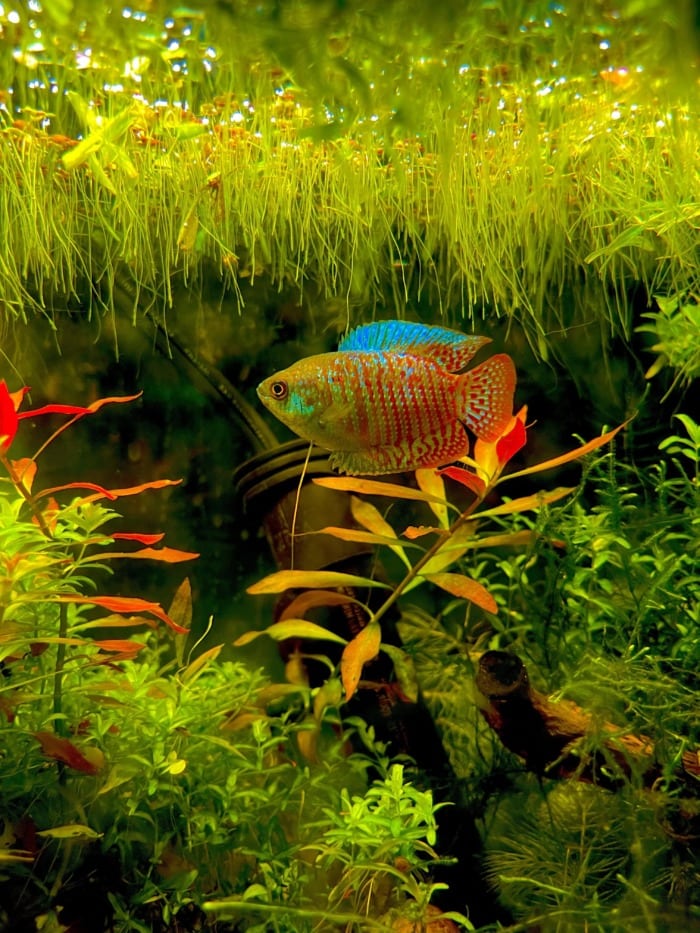
The Dwarf Gourami, scientifically known as Trichogaster lalius, is the biggest fish on our list at a body size of whooping 3.5 inches (8.9 cm).
They may as well be the biggest fish that you can put in a 10-gallon tank.
Despite their bigger size, Dwarf Gouramis are not aggressive fish, quite the opposite actually. They are somewhat shy and will avoid any altercations with other fish. The Dwarf Gourami is also really colorful with a light blue body that has bright orange stripes cascading down its side.
Their size, beauty, and temperament make the Drawf Gouramis an excellent choice for a centerpiece in a 10-gallon tank.
Because of their relatively large size, I recommend keeping 1 specimen per 10 gallons, so for a pair, you will need a bigger tank.
Don’t put goldfish in 10-gallon aquariums if you’re new to this
Each time I see a goldfish in a small bowl on TV I cringe and I have no idea why movies keep portraying it like that, deceiving well-meaning people.
As a result, beginner aquarists typically think that goldfish are the perfect option for a smaller tank, but MOST species end up big and would outgrow the tank fairly quickly.
Only certain smaller species of goldfish can be kept singly in a 10-gallon tank to avoid issues. Some examples would be the twisty-tailed Goldfish and the Pompom Goldfish with both reaching about 6 inches in adulthood (15.24 cm).
So if you aren’t well-researched in this area, it’s best to avoid goldfish until you have a better understanding of their needs and fish keeping as a whole.
How to properly combine fish and create a 10-gallon community tank?

Some people say 6 fish can be put in a 10-gallon tank, while others say 10, but there is no sure way to answer that.
The answer varies because you’d need to be familiar with the specific species you want to keep.
The number of fish you can put in to create a community tank depends on multiple factors including:
- How active the fish swims. Some species prefer lying around all day while others traverse the aquarium’s length multiple times a day.
- How large the fish grows. Some fish grow flat elongated bodies, while others grow almost round. This is the main reason why the “1 inch per gallon” rule is obsolete.
- Whether the fish is a schooling species or not. Some fish remain small but will likely die if you don’t keep them in groups of at least 6 members. Others grow large but have no issues living a solitary life.
- Whether there are aquatic plants in the tank. Aquatic plants provide hideouts and break the line of sight between fish. A well-planted 10-gallon tank can typically accommodate more fish than usual because the plants will bring a feeling of safety and spaces to retreat to its residents.
That being said, there are steps you can follow when setting up a 10-gallon community tank to ensure you get the best results:
- Look for matching water temperature requirements. Some fish will want warmer water while others prefer cooler temperatures to thrive.
Keeping a fish at the right temperature actually boosts the animal’s immune response and improves the chance of a longer lifespan.
- Properly assign top, middle, and bottom dwellers so that there are no conflicts and overcrowding. When coming up with fish combinations, look for species that swim in different areas of the tank.
Too many bottom dwellers will struggle to live together because of the increased competition for food.
This applies to all levels of the tank.
- Look for matching fish temperaments. Some species are friendly and are more compatible with others, while aggressive fish will need to be kept alone or with others that can fend for themselves.
- Have some live plants in there to help in making your fish feel more comfortable. The type of plants you choose can also help clean the tank, provide protection, and feed certain fish, so choose the best ones for your residents.
Check similar articles on fish stocking ideas according to the gallon capacity of your tank:


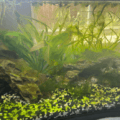


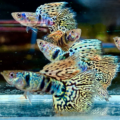


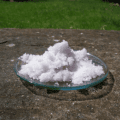
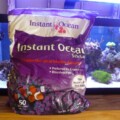
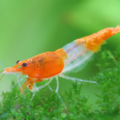
Forgot to add- I’m a beginner!
I love the black neon tetras and albino version but will I have enough room for the number they need? I also love the CPD but will they get nippy with the Gourami?
Thank you again!
Hi,
Don’t go for Celestial pearl danios – they do better in lukewarm tanks, and yours should be within the tropical range with its current inhabitants. Other than that, you could absolutely go for a school of 7 neon tetras. A group of 6 Harlequin rasboras is another alternative. Ember tetras, however, are probably your best bet as they school tightly, have a bright red color which will compliment the grourami and remain under an inch in body length. You could put as much as 10 ember tetras in that setup if the tank is cycled.
Also, if your tank doesn’t have a lot of plants, maybe get something like Anacharis which grows fast, doesn’t require special care and helps keep the water clean. Horntwort is another such plant which looks great. With the kind of fish you have, more plants in the tank will also create a beautiful contasting background color.
Finally, when you put the new fish in the tank immediately add beneficial bacteria as well. Get something like Tetra SafeStart Plus or API Quick Start (or whatever other good brand). This is done to offset the new bioload that you introduced to the system, helping the bacteria that keep ammonia levels down adapt faster.
Acclimate the new fish properly and watch them thrive!
Hope this helps.
What other fish would you add to a ten gallon tank that currently houses a male honey gourami, a Nerite snail, and an African Dwarf frog?
Thanks!